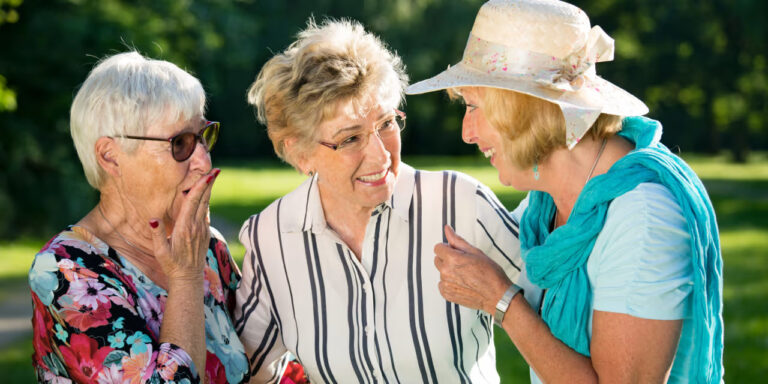Assisted Living Safety: Summer Tips for Elderly Care
As summer approaches, concerns for the well-being of individuals in assisted living facility in Horsham rise alongside the sweltering temperatures. From staying adequately hydrated to mitigating the risks of heatstroke, caregivers in these communities must be as vigilant as police monitoring a bustling neighborhood. This vigilance extends to strategies that intertwine nursing care, financial management, and even the precision of a bathroom cleaner, ensuring no corner becomes a neglected space for waste accumulation. Effective summer care requires more than just the application of sunscreen; it’s an opportunity to enhance the lives of residents through thoughtful planning and joyful interactions. Keep reading to discover practical summer strategies that balance safety with the pleasures of the season, transforming routine precautions into life-enhancing activities.
Key Takeaways
- Caregivers must recognize dehydration and heat stroke signs in the elderly
- Assisted living staff should promote regular hydration through creative strategies
- Outdoor time for seniors requires proper sun protection and shaded rest areas
- Special attention to medication management is needed during hot months
- Coordinated transportation plans are vital for maintaining resident comfort in heat
Ensuring Proper Hydration During Hot Months
As temperatures climb, residents in assisted living facilities, particularly in warm areas such as Massachusetts, face the risk of dehydration, a serious concern for the elderly population. Caregivers within these properties must remain vigilant, understanding the subtle and overt signs that indicate a resident may be suffering from insufficient fluid intake. Recognizing symptoms such as persistent fatigue, dry mouth, or confusion is critical, especially for veterans who may have specific health concerns due to their service history, like those residing near McGuire Air Force Base who might be accustomed to rigorous conditions. Simultaneously, it is essential to develop creative and effective strategies to motivate residents to consistently consume adequate amounts of fluids to maintain good health and prevent dehydration.
Identify Signs of Dehydration in the Elderly
According to the National Center for Health Statistics, elderly individuals are particularly vulnerable to dehydration. While some may associate dehydration with hot climates rather than cold ones, it’s important to remember that the absence of sweating in cooler temperatures doesn’t eliminate the risk. Family caregivers should be attentive to signs like decreased urine output or concentrated urine, which can indicate insufficient hydration, as these symptoms may not be as obvious as a lack of snow in the winter.
In assisted living environments, staff monitor residents closely for changes that might affect their well-being, including signs of dehydration, which can severely impact happiness and health. Unlike a nursing home setting where medical care is immediately on hand, assisted living facilities rely on trained caregivers to notice subtler indications of dehydration such as sudden dizziness, a dry or sticky mouth, or a profound sense of lethargy, and to promptly address these issues to maintain health and hydration levels in their residents.
Tips for Encouraging Fluid Intake Among Residents
An expert in assisted living care understands the importance of avoiding neglect when it comes to the hydration needs of the elderly. By keeping the mind engaged with fluid-rich snacks such as watermelon or cucumber during activities, caregivers can subtly increase water intake and thus enhance the quality of life for residents.
In hospice and assisted living environments, it’s vital to create a culture where residents feel encouraged to hydrate regularly without feeling coerced. Presenting options that cater to their preferences, such as offering herbal teas or flavored waters, can make the act of drinking fluids throughout the day a more appealing and ingrained part of their routine.
Heat Stroke Prevention Strategies for Caregivers
As the mercury rises, so does the risk of heat stroke, an emergency that spares no one, especially not the vulnerable elderly populace of a senior living community. Caregivers hold the crucial responsibility of recognizing early symptoms of heat stroke in residents, ensuring that these signs are not dismissed as mere discomfort. Often, overheating may manifest subtly, yet it may swiftly escalate if unnoticed – a resident exhibiting confusion or fatigue might be misconstrued as simply tired after an engaging conversation in the dining room. Educating staff on the language of the body’s distress signals primes them for rapid intervention. Knowledgeable caregivers are the frontline in mitigating this risk, ready to administer immediate steps to cool down a resident showing signs of overheating, thus safeguarding the community’s well-being.
Recognizing Early Symptoms of Heat Stroke in Seniors
Within the warm enclaves of Sussex, caregivers must be astute in recognizing the early signs of heat stroke among seniors, as these can be easily mistaken for less serious conditions. A resident’s lack of appetite, often misconceived as a minor complaint, may in fact stem from heat-related strains affecting their nutrition and hydration levels, necessitating swift home care responses in the United States to avert dire outcomes.
During the sweltering summer months, seniors may exhibit signs of heat stroke after basic activities such as bathing, which might lead to overheating. Caregivers should be attuned to symptoms such as excessive sweating, headache, or a sudden onset of weakness, initiating immediate measures to cool down residents and secure their health in the assisted living environment.
Immediate Steps to Take if a Resident Shows Signs of Overheating
If a resident in senior care starts to show signs of overheating, the first step is to move them to a cooler, shaded area immediately. Research has shown that prompt removal from hot environments can significantly reduce the risk of heat-related brain injuries.
In cases where overheating is suspected, caregivers trained in social work and elderly support should apply cool clothes to the skin and encourage the residents to drink water if they are able. These actions, quite common in the temperate climate of Wales, are vital in stabilizing body temperature and safeguarding the resident’s health.
Implementing Sun Safety Procedures in Outdoor Areas
As residents engage in Outdoor Activities for Seniors, ensuring their protection from the sun is a top priority for caregivers in assisted living facilities. Equipping the elderly with appropriate sunscreen, recommended by a registered nurse based on skin type and health conditions, provides a critical shield against harmful UV rays. Protective clothing further complements the use of sunscreen, offering an additional layer of safety while enabling residents to enjoy the freshness of the outdoors. Senior living resources often include guidelines for selecting optimal sun protection measures. In the pursuit of exemplary elderly care, the design of outdoor areas should also reflect a commitment to comfort and safety, with shaded rest zones where residents can find respite from the sun’s intensity, promoting both enjoyment of the outdoors and safeguarding their health.
Choosing the Right Sunscreen and Protective Clothing
When it comes to outdoor recreation in assisted living, selecting sunscreen isn’t a one-size-fits-all approach. Taking cues from recent census data, carers should understand the geriatrics-specific needs that influence the choice of sunscreen, aiming for broad-spectrum protection that caters to the delicate skin of seniors and balances efficacy with gentleness to avoid irritation.
Residential care settings prioritize residents’ health without compromising the joys of summer outdoor activities. To this end, geriatric care experts recommend light, breathable, and UV-protective clothing to accompany the use of sunscreen, ensuring that while residents engage in assisted living recreation, they remain safeguarded from the sun’s harmful effects.
Creating Shaded Rest Areas Outside for Residents
In the pursuit of maintaining a vibrant independent living atmosphere, the creation of shaded rest areas becomes paramount for any assisted living community. These havens provide a cooler space where seniors can relax while still enjoying the natural environment, reinforcing attention to their comfort and well-being during warmer months.
Current trends such as telehealth remind caregivers that technology and healthcare are evolving, and so too should the infrastructure within elderly care spaces. By integrating shaded areas outdoors, residents of assisted living facilities, and even those in foster care environments, are given the opportunity to engage with nature without the risk of heat-related health issues.
Regular Health Checks Throughout the Summer
Summer brings a surge in temperatures, warranting extra vigilance in the care of elderly residents, particularly those with conditions such as dementia, which can heighten sensitivity to heat. In light of this, assisted living facilities, including those in Illinois, must proactively adjust their healthcare strategies to combat potential complications. Regular health checks become even more critical during these months, incorporating additional screenings that can detect heat-induced exacerbations of preexisting diseases. An inclusive care approach also includes examining and potentially modifying the medication management plans for residents to account for temperature fluctuations. A seasoned approach to elderly care, often reinforced by insights from psychotherapy practices, underpins this heightened focus on monitoring health indicators, ensuring the elderly experience comfort and safety regardless of the season’s challenges.
Scheduling Extra Health Screenings During Warmer Months
With the swing into the hotter months, employment of preventative measures in assisted living facilities is vital, particularly in conducting extra health screenings. This strategy is quintessential in states where residents, including veterans of the United States armed forces, reside, ensuring their well-being as temperatures rise.
Assisted living communities, cognizant of the implications that heat can have on individuals with mid to lower median income, are reevaluating their policies. Proactive screenings are integrated into the care plans in these townships, serving as an additional safety net for the elderly during the oppressive summer heat.
Adjusting Medication Management With Temperature Changes
As summer temperatures soar, healthcare professionals in assisted living facilities face the challenge of managing medication effectiveness. Increased heat can affect how medications work and are stored, making it essential for caregivers to consult with healthcare providers to adjust dosages or storage requirements, ensuring each patient’s treatment remains effective while they enjoy aging in place comfortably.
In regions where the county might issue heat advisories, assisted living residences need to be acutely mindful of vaccination storage guidelines, as high temperatures can compromise vaccine integrity. Coordination with child protective services and local health agencies ensures that all residents, particularly the most vulnerable, maintain access to properly managed medications throughout the fluctuating summer climate.
Safe Transportation Plans for Summer Outings
With the summer season inviting more outdoor excursions, assisted living facilities near Willow Grove Park Mall are crafting transportation plans that prioritize safety amid the rising temperatures. Caregivers are arranging for air-conditioned vehicles to ensure comfortable travel to nearby attractions, while also considering the tax benefits of energy-efficient transportation options.
Care coordinators also review the logistics of transportation to ensure it aligns with other responsibilities, such as childcare commitments for staff members. This prudent planning ensures that the high standard of care is consistent, even as employees balance their personal and professional obligations.
Safe transport becomes a focal point when planning educational outings for assisted living residents to the cultural sights around the suburb. Routes are pre-planned to avoid congested traffic areas and the warmest parts of the day, optimizing comfort for seniors as they embark on enriching summer activities.
Communities are implementing careful transportation strategies, taking into account the unique needs of residents traveling to and from the assisted living facility. This meticulous approach ensures that all outings, whether for shopping trips to Willow Grove Park Mall or leisure drives around the suburb, are executed with the utmost attention to resident well-being.







